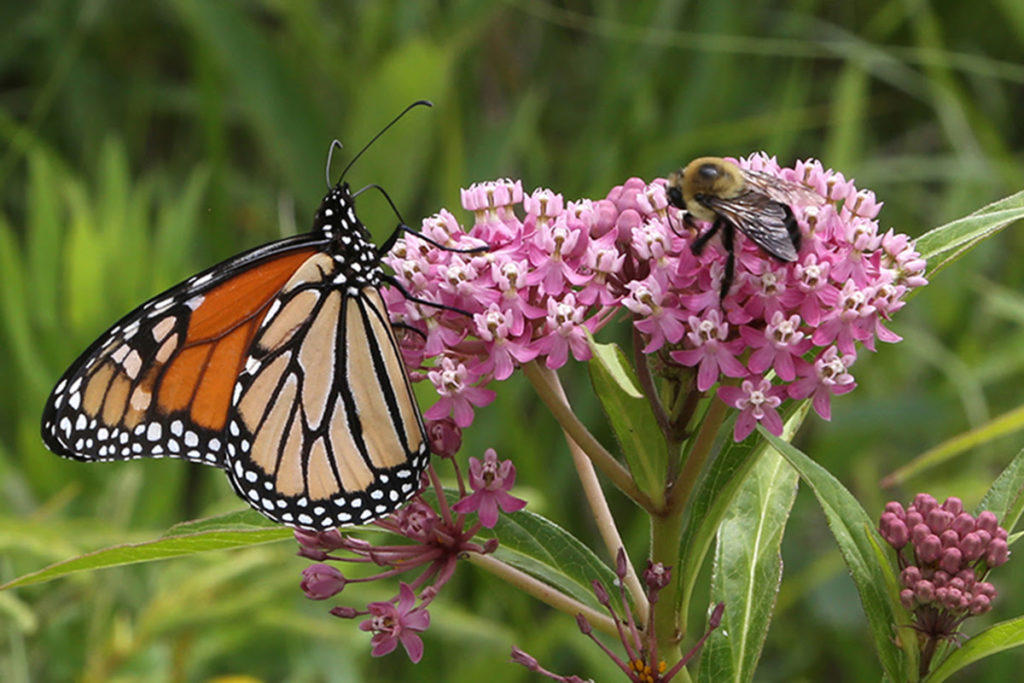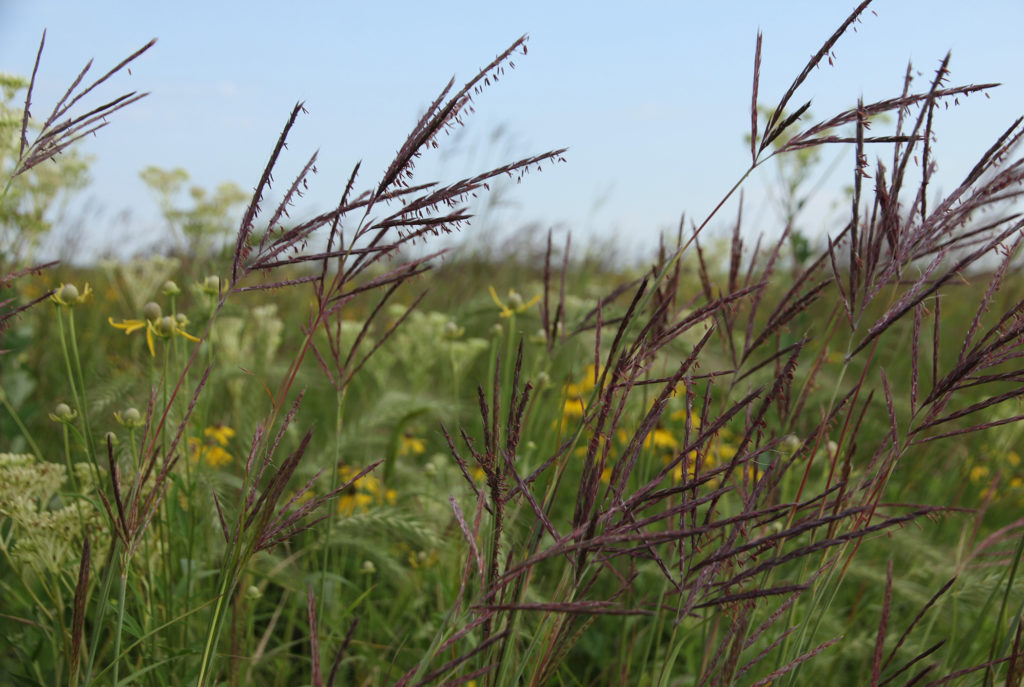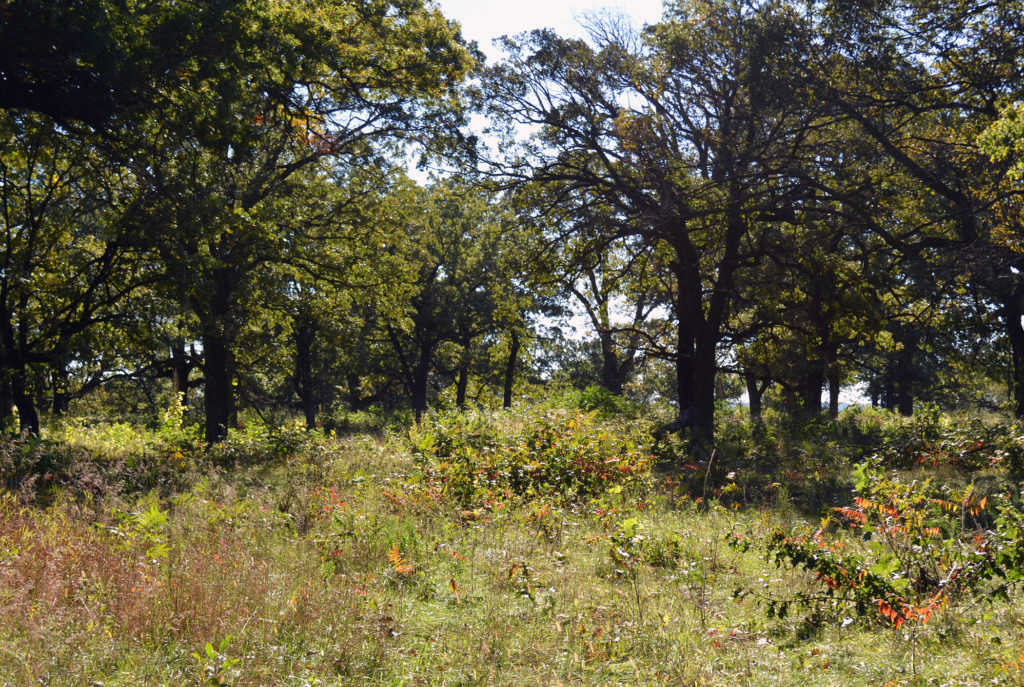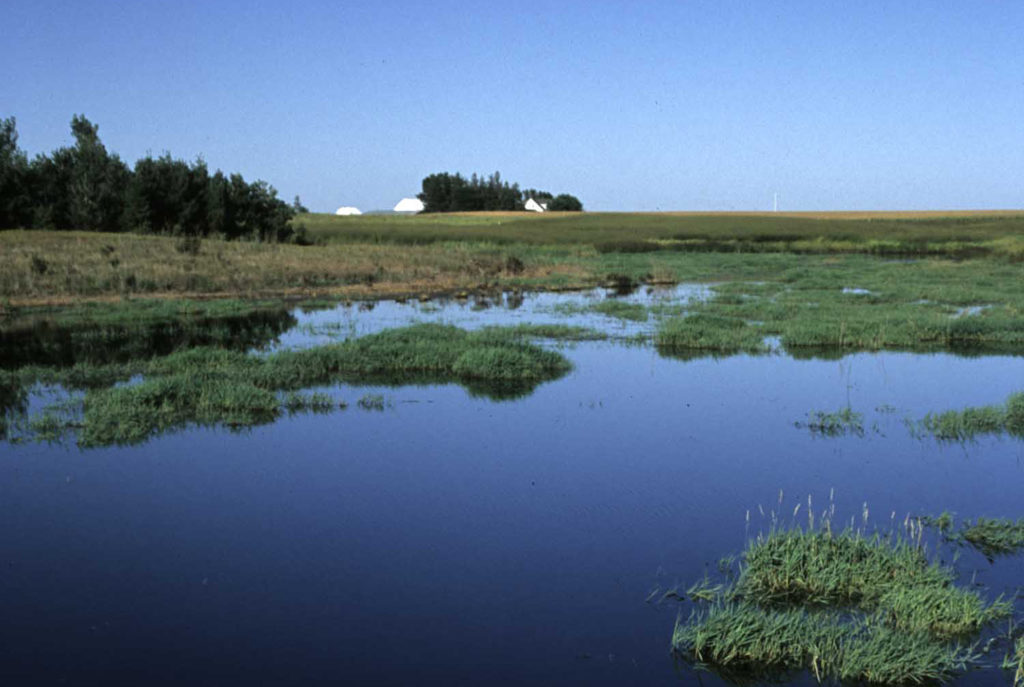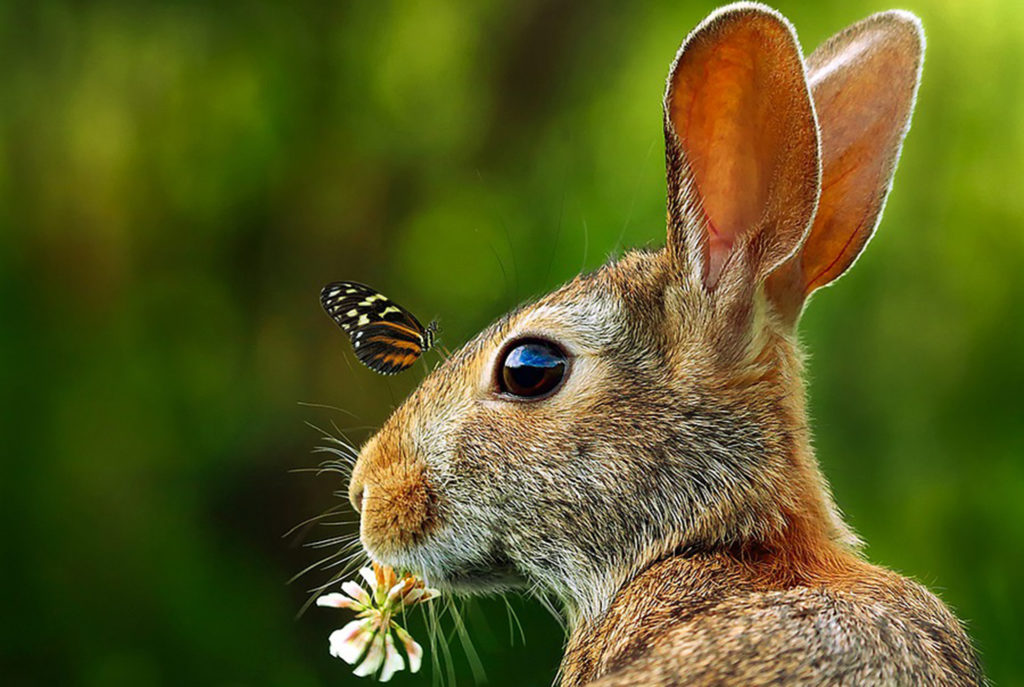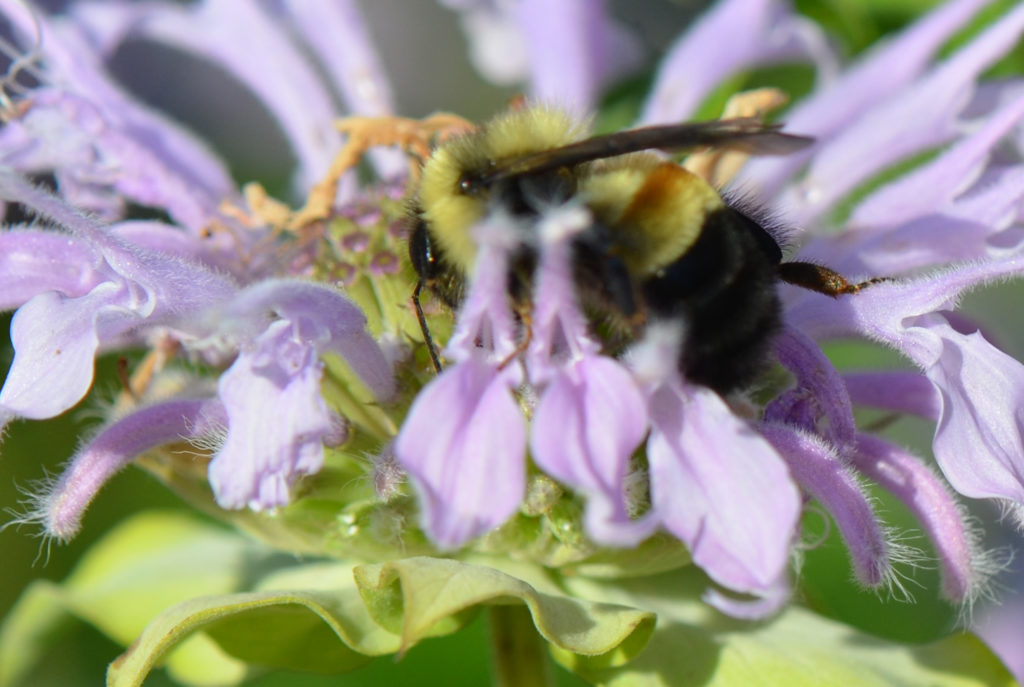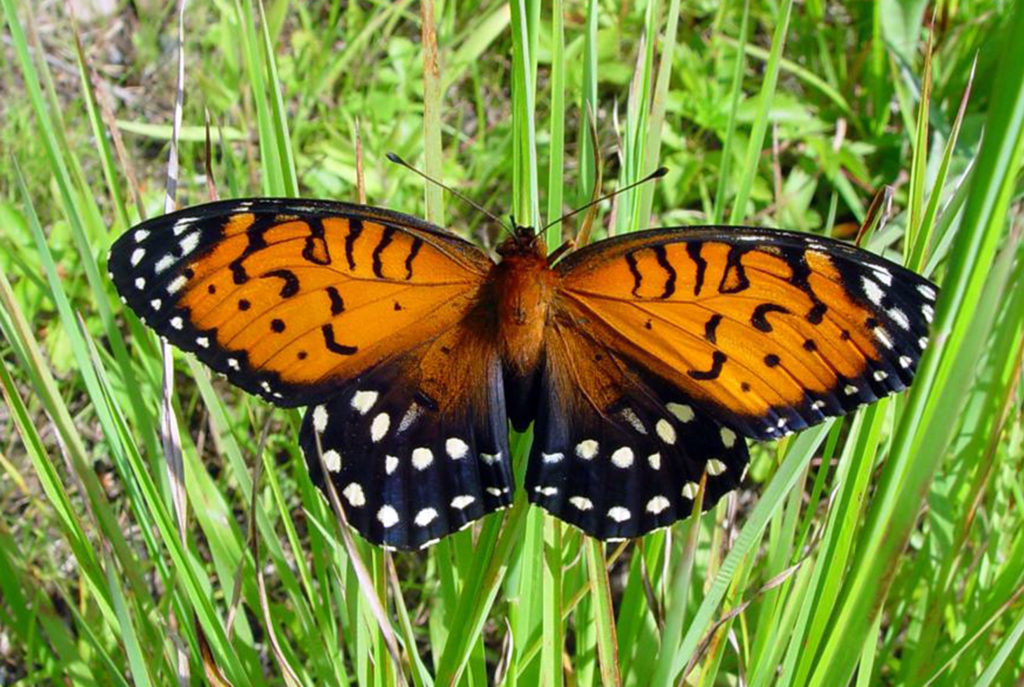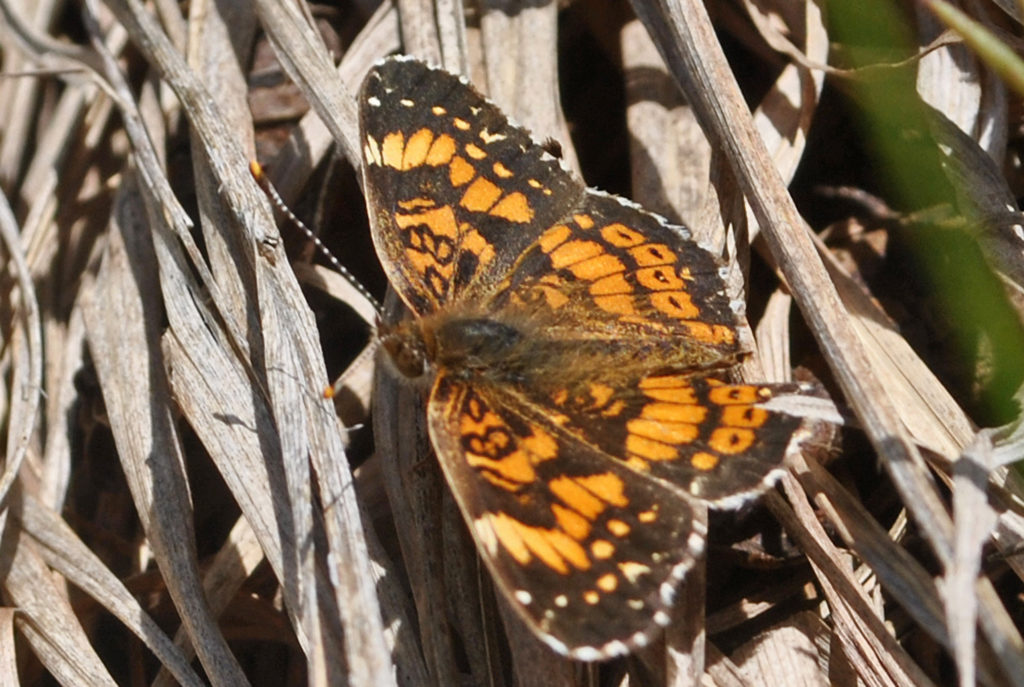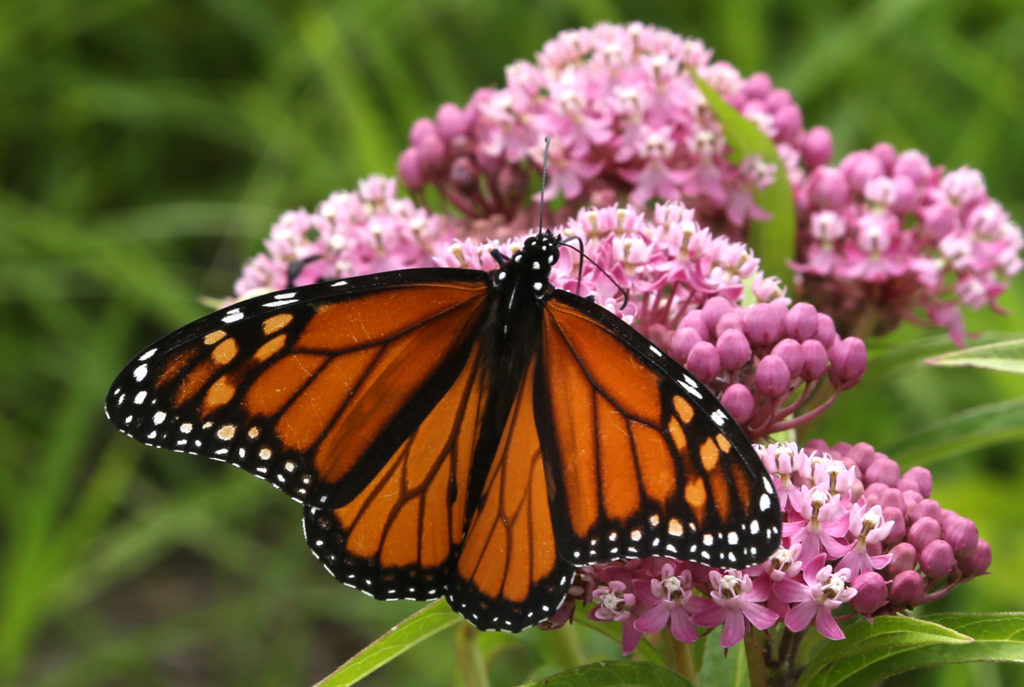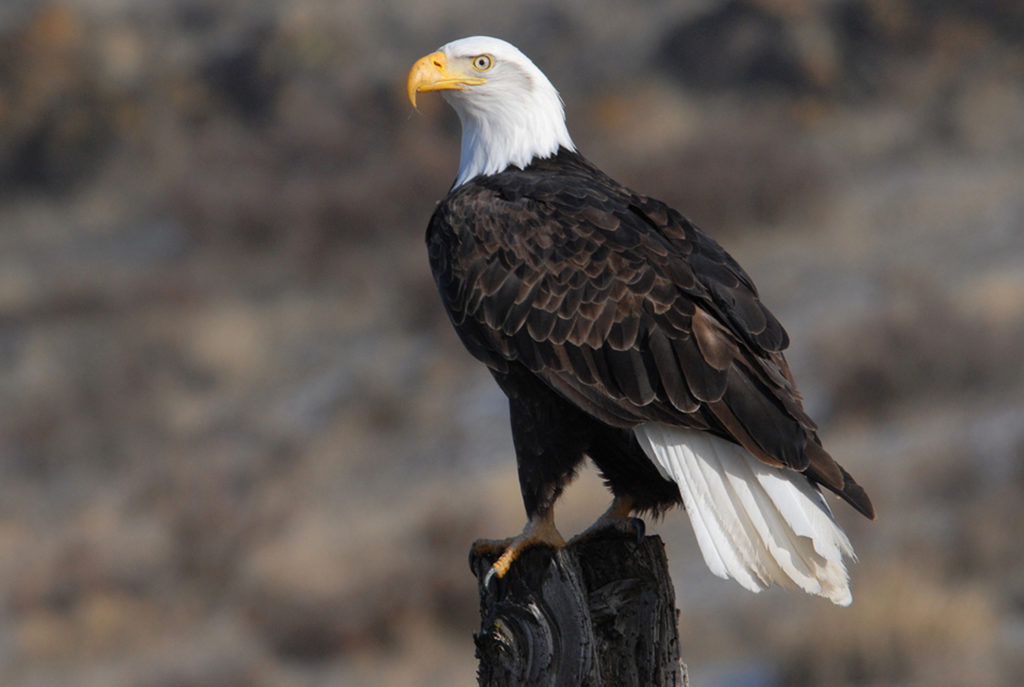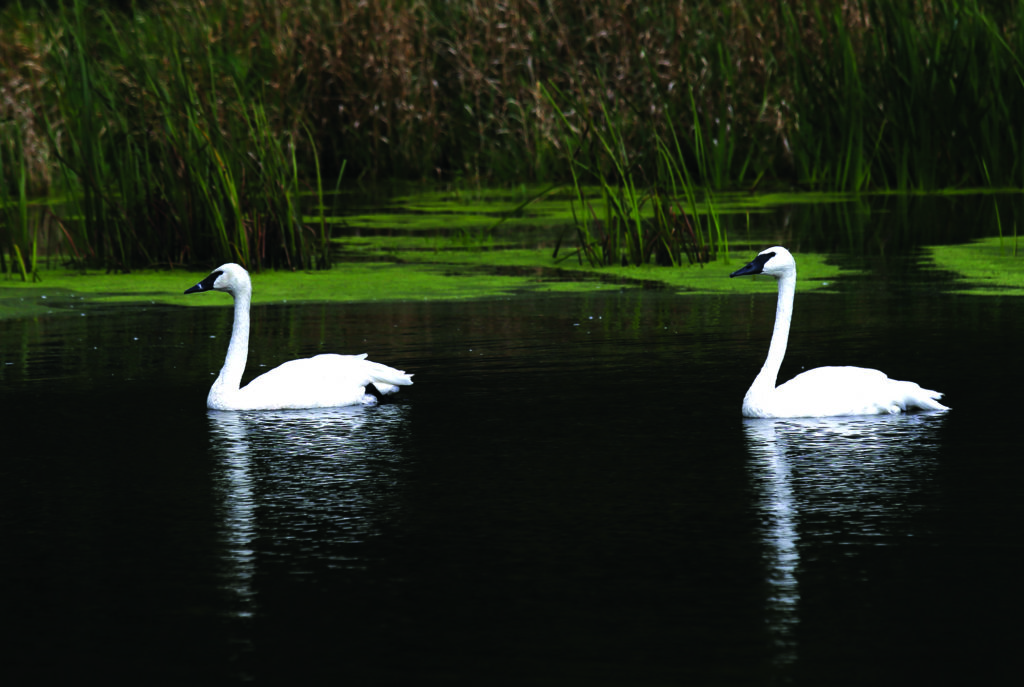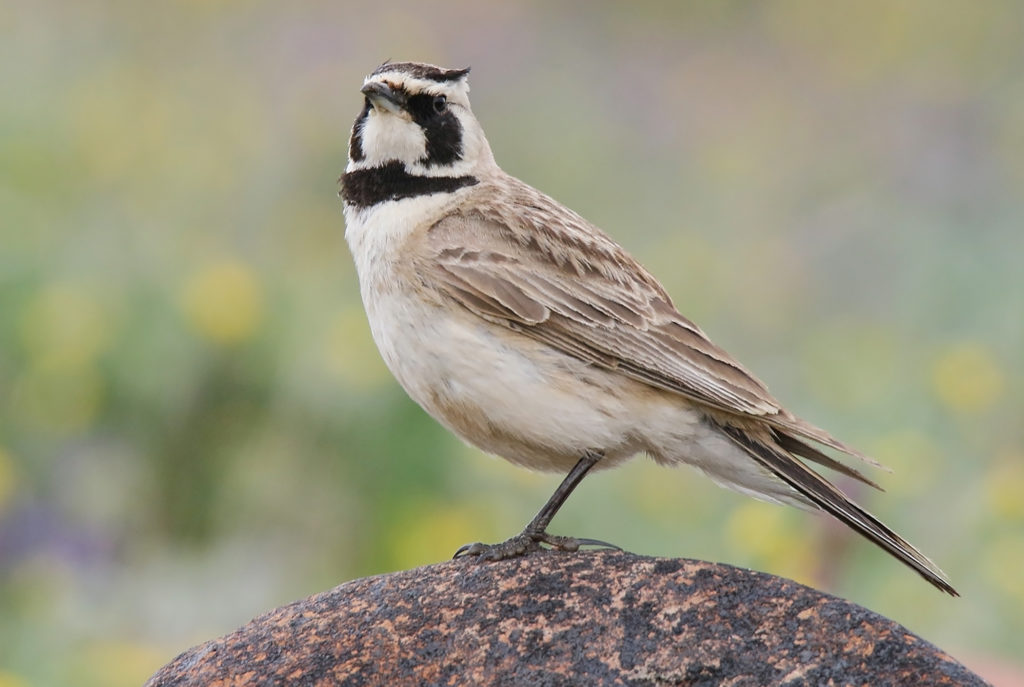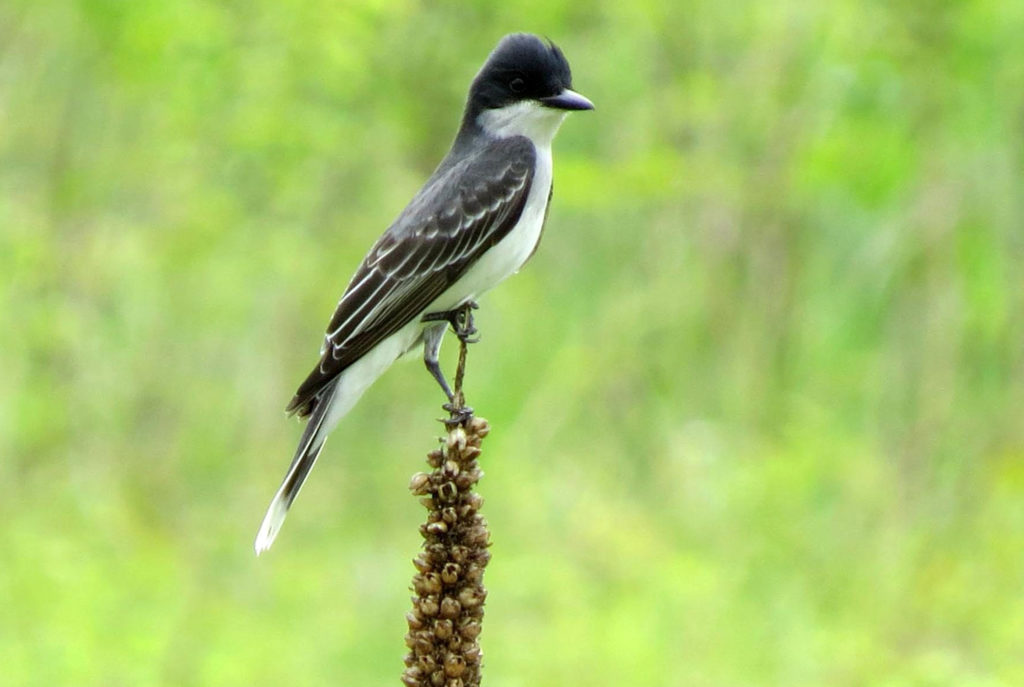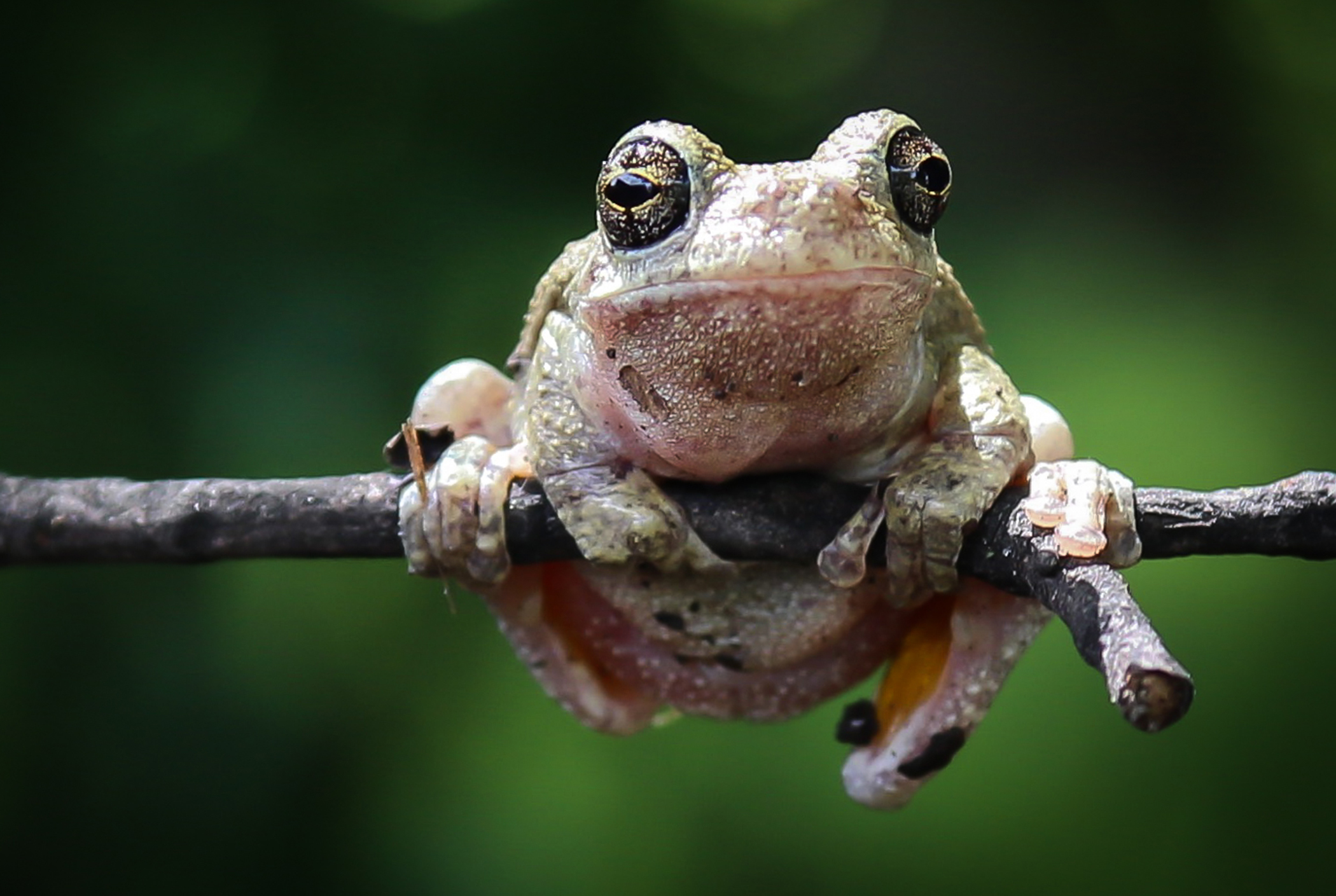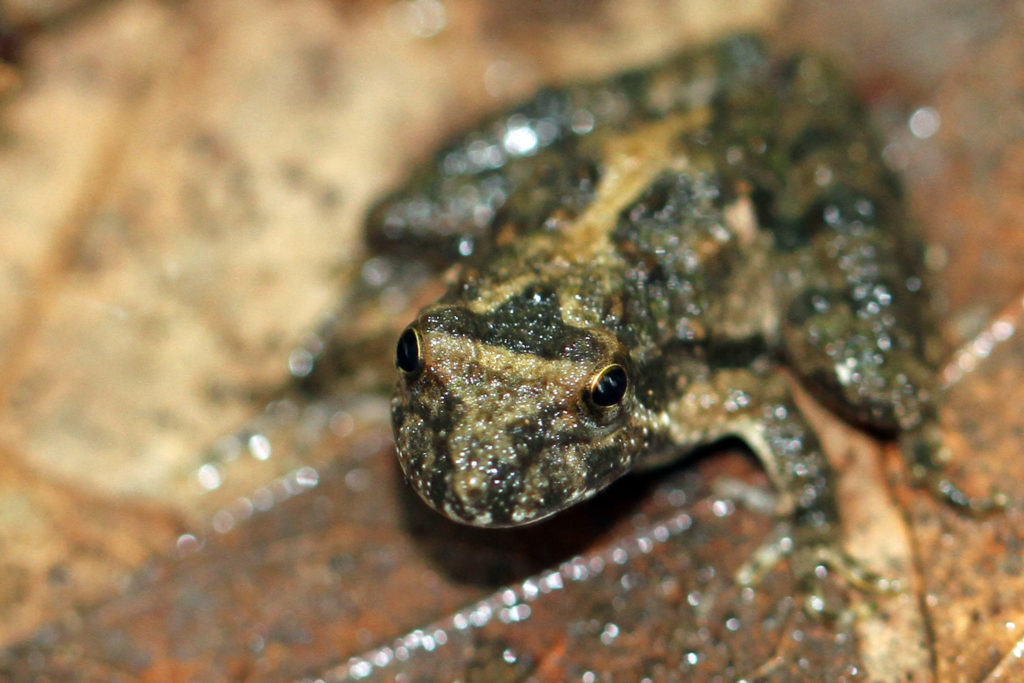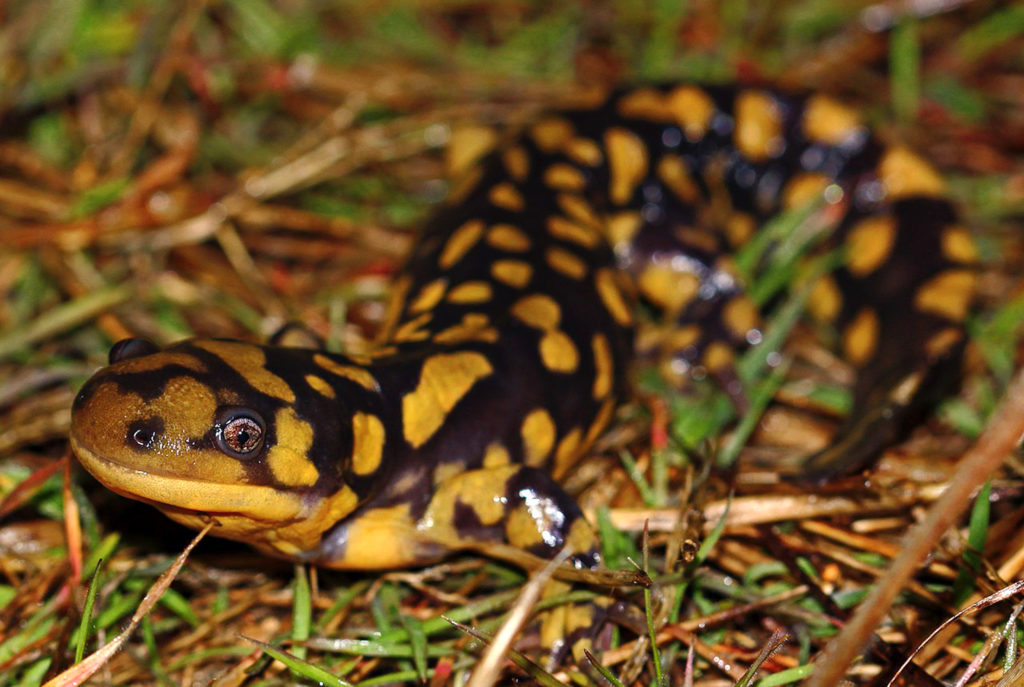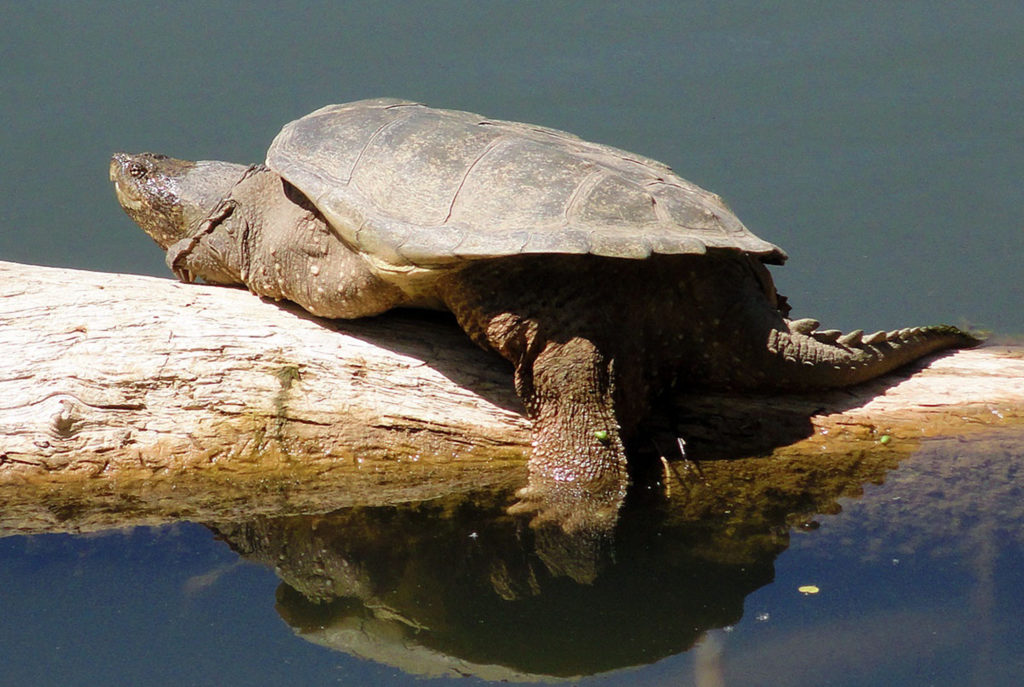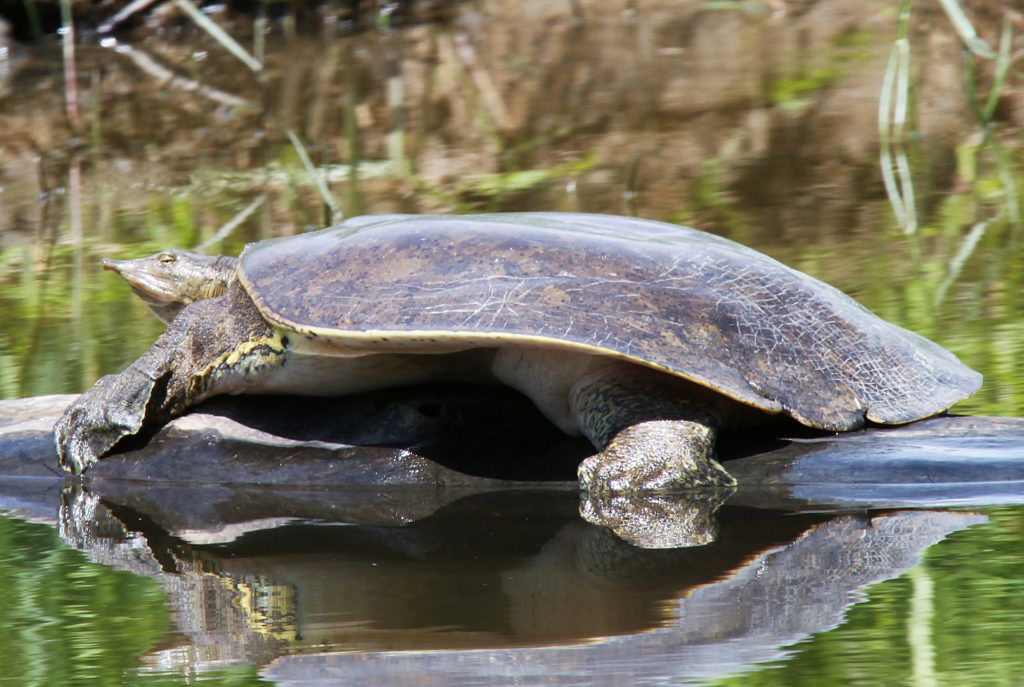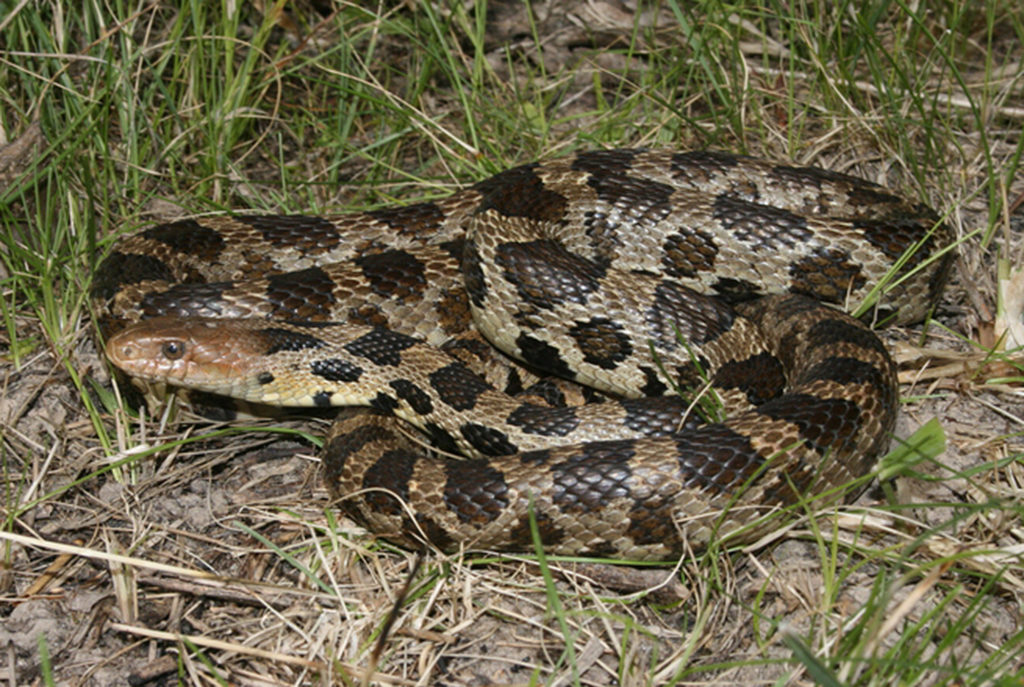Habitat and Wildlife
Iowa is home to four main types of habitat that wildlife call home. These include tallgrass prairie, woodlands, oak savannas, and wetlands. Each of these habitats are important, and in dire need of restoration and conservation. If you would like to learn more about restoring habitat on your land, please contact our watershed coordinator using the form at the bottom of this page.
Tallgrass Prairie: Tallgrass prairie once covered 80% of the state of Iowa, but currently, only 0.1% of the original prairie cover remains. This grassland ecosystem contains hundreds of species of wildflowers, grasses, shrubs, and small trees. The plants in the prairie not only provide food, shelter, and cover for animals but also assist in reducing soil erosion and runoff. The roots of prairie plant species can extend extremely deeply into the soil, as much as 12 feet, creating an anchor for the soil, as well as increasing water infiltration. Just a few animals that call the prairie home include coyotes, jackrabbits, deer, prairie chickens, bobwhite quail, burrowing owls, meadowlarks, box turtles, prairie crayfish, and hundreds of pollinating bees and butterflies. Some famous former residents included bison, wolves, cougars, moose, and bears.
Woodlands: Woodlands are areas of dense tree cover including forests. In Iowa, bottomland woodlands are commonly found around creeks and river basins and include shade and wet-tolerant trees like cottonwood, maple, and basswood. In contrast, upland woodlands are found on hilltops and slopes and include trees that prefer more sun and drier soils like hickories, oaks, and walnuts. Trees can produce large root systems that can help reduce erosion, especially around flowing creeks and rivers. Trees can also act as a windbreak, reducing additional erosion. Some animals that live in Iowa’s woodlands include several species of songbirds, owls, eagles, deer, coyotes, turkeys, raccoons, opossums, foxes, chipmunks, squirrels, beetles, and several butterflies.
Oak Savannas: Oak savannas are a kind of intermediary zone between prairie and woodland. These ecosystems have several plant species found in the tallgrass prairie while also including large oaks dotting the landscape, and woodland species living in the shade of the oaks. Both the oaks and prairie plants are well adapted to wildfire that was once common, leading to a unique ecosystem to thrive here in Iowa. With the reduction of fires, many oak savannas have slowly been replaced by woodlands, forests, or farmlands. Some species of animals that thrive in Oak Savannas include those that are found in the prairie and woodland such as deer, songbirds, owls, hawks, coyotes, turkeys, quail, and pollinators like bees and butterflies.
Wetlands: Wetlands are areas of standing water and saturated soils that have their own unique communities of plants and animals. Wetlands can be large wet areas like oxbows and lakes or be smaller areas found within other ecosystems like seepage wetlands and prairie potholes. Plants found here include floating plants like water lilies, American lotus, and duckweed, as well as wet tolerant plants like cattails, blazing star, swamp milkweed, and irises. Wetlands, especially prairie potholes, were once common throughout Central Iowa but have been severely reduced due to the rise of row crop farming. After a large rain, the outlines of these wetlands can still be seen in flooded portions of farm fields. Wetlands not only provide habitat to plants and animals, but they also act as natural filters for runoff, cleaning nutrient-heavy water before it flows into other waterways. Some animals that are found in wetlands include waterfowl like swans and ducks, shorebirds, kingfishers, beavers, otters, frogs, turtles, dragonflies, and several butterflies.
Iowa is home to hundreds of species of mammals, birds, reptiles, amphibians, fish, pollinators, and other invertebrates. Unfortunately, many of them are becoming threatened due to the continuing loss of habitat. We are mainly focussed on conserving pollinators and wildlife that are listed as “Species of Greatest Conservation Need” by the Iowa Department of Natural Resources, a full list of which can be found here. We’ve included a small selection of species of greatest conservation below which have recently been seen in Central Iowa. If you would like to learn more about providing habitat for these species on your land, please contact our watershed coordinator using the contact form at the bottom of this page.
Rusty Patched Bumblebee
Habitat: Riparian Prairie and Woodland
When in Iowa: Year-Round
Diet: Pollen and nectar; preferred plants include milkweeds, prairie clovers, jewelweed, asters
Notes: This is the only federally endangered bee species in the lower 48 states.
Regal Fritillary
Habitat: Tallgrass Prairie
When in Iowa: Year-Round
Diet: Prairie and Birdsfoot Violets as caterpillars, nectar as adults
Notes: This butterfly was once considered for Iowa’s Official State Butterfly.
Gorgone Checkerspot
Habitat: Tallgrass Prairie
When in Iowa: Year-Round
Diet: Sunflowers and Lysimachia as caterpillars, nectar as adults
Notes: As adults, this butterfly exclusively visits yellow flowers.
Monarch
Habitat: Tallgrass Prairie
When in Iowa: Breeding Season (Spring-Fall)
Diet: Milkweeds as caterpillars, nectar as adults
Notes: The Monarch migrates all the way to Mexico for the winter.
Bald Eagle
Habitat: Forests near water
When in Iowa: Year-Round
Diet: Fish
Notes: The mating dance for the bald eagle involved two birds grabbing each other’s talons and free falling.
Trumpeter Swan
Habitat: Lakes and Ponds
When in Iowa: Breeding Season
Diet: Plants
Notes: This is the largest species of bird in North America.
Horned Lark
Habitat: Tallgrass Prairie
When in Iowa: Year-Round
Diet: Seeds and Insects
Notes: There are 42 subspecies of Horned Lark worldwide.
Eastern Kingbird
Habitat: Tallgrass Prairie
When in Iowa: Breeding Season
Diet: Fruit and Insects
Notes: This bird has a hidden patch of bright feathers on its head that it uses to intimidate predators.
Gray Tree Frog
Habitat: Forests and Woodlands
When in Iowa: Year-Round
Diet: Insects
Notes: This species is strictly nocturnal, and is often found feeding on insects attracted to outdoor lights.
Blanchard’s Cricket Frog
Habitat: Wetlands and Ponds
When in Iowa: Year-Round
Diet: Aquatic Invertebrates
Notes: This small frog only lives for around 1 year.
Tiger Salamander
Habitat: Underground in Tallgrass Prairie and Woodlands
When in Iowa: Year-Round
Diet: Insects, Worms, and Frogs
Notes: This is the largest ranging salamander in North America, found coast-to-coast.
Common Snapping Turtle
Habitat: Ponds
When in Iowa: Year-Round
Diet: Small Animals
Notes: Snapping turtles can live to be over 100 years old.
Spiny Softshell Turtle
Habitat: Lakes and Ponds
When in Iowa: Year-Round
Diet: Aquatic Invertebrates
Notes: This turtle can breathe underwater due to special adaptations in their throat and skin.
Western Foxsnake
Habitat: Tallgrass Prairie
When in Iowa: Year-Round
Diet: Small Mammals
Notes: They will often imitate rattlesnakes by skating their non-rattling tails and hissing.
Northern Watersnake
Habitat: Creeks, Streams, and Rivers
When in Iowa: Year-Round
Diet: Small Animals
Notes: Can improve fisheries by reducing overpopulation and providing food for large fish.

